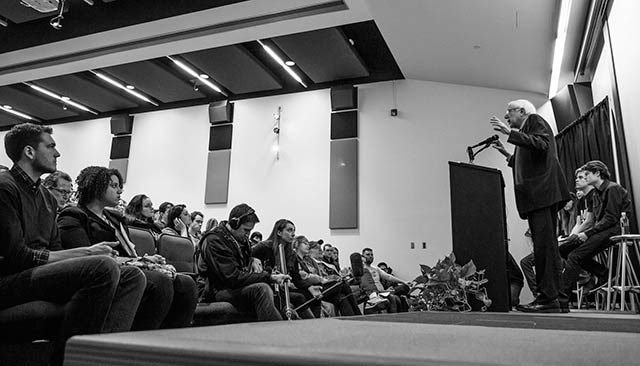
The New York Times recently reported that Senator Bernie Sanders raised over $8 million from his grassroots supporters on ActBlue, a Democratic fundraising web platform. For a presidential candidate considered a long shot, this is, and should be, considered quite a feat. It’s clear the senator has unexpected levels of grassroots support among the Democratic Party base.
A question remains, however: Is the Sanders surge a fluke, or can it be sustained long enough to become a noteworthy political campaign? In a race widely considered a non-contest, the ability for Senator Sanders to do well without taking major campaign donations could be substantial for future non-establishment candidates running in a post-Citizens United election.
It’s possible that Sanders’ success is built on an anti-Clinton wave, but if it is instead based on his policies, the right political infrastructure could take him far. And the support for many of Sanders’ ideas is clearly there.
Sanders is progressive on issues that are considered most important to young people, from marijuana legalization to income inequality to climate change. In early states, like New Hampshire and Iowa, polling hints that he is gaining ground on Clinton. Polling by Democracy Corps shows that the new majority of Americans also leans progressive. But being populist or progressive on the issues isn’t enough. The political infrastructure that supports the new majority and its populist ideas must also exist: a new kind of political power.
This “new power” politics is a rejection of the top-down, king-making mentality that has become symbolic of current American politics. In a recent Harvard Business Review article, Jeremy Hiemans and Henry Timms define “old power” as “a currency possessed by the few.” However, they argue that new power, a force on the rise, is open and participatory. It is represented by institutions that crowdsource wisdom, allow for wide participation and sharing, and capitalize on the agency of a population. It’s the kind of political power driven by grassroots energy and bottom-up fundraising. It’s what many may say Barack Obama achieved in 2008. But it’s not the dominant force in today’s political system.
Sanders needs a surge of new political infrastructure, which can only be achieved by investing in it. We should invest in technology that not only polls and analyzes voters but also engages citizens in the long-term political and policy process. We should invest in civic infrastructure beyond the electoral cycle to ensure that democratic participation is not about being dragged to the polls every two to four years but, instead, is a regular aspect of American life.
A change in investments that shifts power politics could be game-changing for Sanders and future non-establishment candidates. It is still, of course, an uphill battle for Sanders to become a dangerous challenger for Hillary Clinton. But a powerful enough Sanders candidacy is good for the future of democratic elections.
Join us in defending the truth before it’s too late
The future of independent journalism is uncertain, and the consequences of losing it are too grave to ignore. To ensure Truthout remains safe, strong, and free, we need to raise $29,000 in the next 36 hours. Every dollar raised goes directly toward the costs of producing news you can trust.
Please give what you can — because by supporting us with a tax-deductible donation, you’re not just preserving a source of news, you’re helping to safeguard what’s left of our democracy.